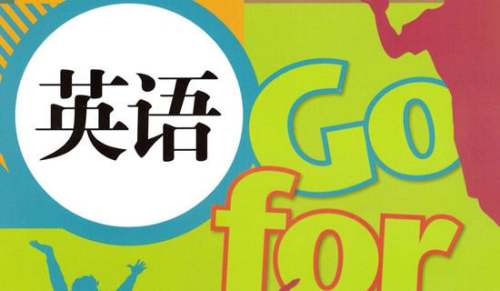- ���P(gu��n)���]
����Ӣ�Z��x���⡶Television shows��
����Ӣ�Z��x���������Dz�����һ��һϦ�g��ɵģ�Ҳ����������һЩ��x���ɶ���(sh��)�F(xi��n)��������ߡ�����Ч���k��߀�Ǽӏ�(qi��ng)����(x��)��������С��������һƪ����Ӣ�Z��x���⣬ϣ�����������������

����Long bus rides are like television shows. They have a beginning,a middle,and an end with commercials thrown in every three or four minutes. The commercials are unavoidable. They happen whether you want them or not. Every couple of minutes a billboard glides by outside the bus window. "Buy Super Clean Toothpaste.""Drink Good Wet Root Beer.""Fill up with Pacific Gas."Only if you sleep,which is equal to turning the television set off,are you spared the unending cry of "You Need It! Buy It Now!"
����The beginning of the ride is comfortable and somewhat exciting,even if you‘ve traveled that way before. Usually some things have changednew houses,new buildings,sometimes even a new road. The bus driver has a style of driving and it‘s fun to try to figure it out the first hour or so. If the driver is particularly reckless (��ç��) or daring,the ride can be as thrilling as a suspense story. Will the driver pass the truck in time? Will the driver move into the right?or the left?hand lane? After a while,of course,the excitement dies down. Sleeping for a while helps pass the middle hours of the ride. Food always makes bus rides more interesting. But you‘ve got to be careful of what kind of food you eat. Too much salty food can make you very thirsty between stops.
����The end of the ride is somewhat like the beginning. You know it will soon be over and there‘s a kind of expectation and excitement in that. The seat of course,has become harder as the hours have passed. By now you‘ve sat with your legs crossed,with your hands in your lap,with your hands on the armrestseven with your hands crossed behind your head. The end comes just at no more ways to sit.
����1.According to the passage,what do the passengers usually see when they are on a long bus trip?
����A.Buses on the road.
����B.Films on television.
����C.Advertisements on the billboards.
����D.Gas stations.
����2.What is the purpose of this passage?
����A.To give the writer‘s opinion about long bus trips.
����B.To persuade you to take a long bus trip.
����C.To explain how bus trips and television shows differ.
����D.To describe the billboards along the road.
����3.The writer of this passage would probably favor .
����A.bus drivers who aren‘t reckless B.driving alone
����C.a television set on the bus D.no billboards along the road
����4.The writer feels long bus rides are like TV shows because .
����A.the commercials both on TV shows and on billboards along the road are fun
����B.they both have a beginning,a middle,and an end,with commercials in between
����C.the drivers are always reckless on TV shows just as they are on buses
����D.both traveling and watching TV are not exciting.
����5.The writer thinks that the end of the ride is somewhat like the beginning because both are .
����A.exciting B.comfortable C.tiring D.boring
�����𰸣�
����1.C���µĵ�һ���У����ߔ����˳˿������L;܇����Ҋ���ǏV���ơ�
����2.Aȫ�Ķ������߱�������܇�L;�����еďV�����Ҋ�Ϳ�����
����3.D�ĵ��������ߌ�"�L;��܇�ЏV��̫��"�����_(d��)����r�������߲�̫ϲ�g��;�ďV���ơ�
����4.B�����µ�һ�ε�һ��͵ڶ����֪�𰸞�B��
����5.A�ɵ����ε�һ��͵ڶ����֪��
������������Ӣ�Z��x����֮��(x��)��(ji��)�}���}����
������(x��)��(ji��)�}�����˼�x������ָᘌ����µ�ij��(g��)��(x��)��(ji��)���O(sh��)�õ�ԇ�}����(x��)��(ji��)�}�����}�����ܶ࣬������nj�ij��(g��)��(x��)��(ji��)��ͬ�x�Y(ji��)��(g��u)�D(zhu��n)�Q���M(j��n)�п��顢Ҳ�����nj������еĎׂ�(g��)��(x��)��(ji��)(ͨ�����Ă�(g��))����һ��Ҫ�����Д��Ƿ�(�x�����_��һ�(xi��ng)���x���e(cu��)�`��һ�(xi��ng))��?q��)��ׂ�(g��)��(x��)��(ji��)�M(j��n)������ȡ�����@�ԇ�}�r(sh��)��һ��(g��)���õķ��������\(y��n)�ö�λ����������(j��)�}�ɻ��x�(xi��ng)�еľ����~��ԭ�����ҵ����P(gu��n)�ľ��ӣ��c�x�(xi��ng)�M(j��n)�б��^�Ķ��_����(�˕r(sh��)Ҫ�eע��һЩ��Ҋ��ͬ�x�D(zhu��n)�Q)��
�����F(xi��n)�ڇ��@�����Ķ�λ��Փ��������ׂ�(g��)С�ļ��ɣ�
����(1) �P(gu��n)�I��Ϣ��λ�����@��(g��)��Ҫ�Ǽ�(x��)��(ji��)�}�����漰����(sh��)��(���ڡ��r(sh��)�g���r(ji��)���)���Ϳ����������п���Ȧ����(sh��)�֣����ҳ�Ŀ��(bi��o)��(sh��)�ּ�������(y��ng)�ļ�(x��)��(ji��)��Ϣ��߀���������������c(di��n)���~�ȵȣ�������߀����һЩ��ʾ�鹝(ji��)�l(f��)չ����l�V���P(gu��n)�I���ۣ���First�� Next�� Finally�ȵȡ�
����As a young girl growing up in the 1930s�� I always wanted to fly a plane�� but back then it was almost unheard of for a woman to do that. I got a taste of that dream in 2011��when my husband arranged for me to ride in a hot air balloon for my birthday. (2011��߿�Ӣ�Z����Aƪ)
����What happened to the author in 2011?
����A. She flew an airplane
����B. She entered a competition
����C. She went on a hot air balloon ride
����D. She moved into a retirement community
�������������}�ٵ��ͼ�(x��)��(ji��)�}��ͨ�^�}���еĕr(sh��)�gin 2011���y��λ�����д��w�ֲ��֣����������i�������C��
����(2) ͬ�x��λ����Ӣ���п�����Paraphrase��ʾ��ͬ�x��λ����ָ���}���õ��P(gu��n)�I�~�����еIJ�һ�£�������ͬ�x���|(zh��)��ͬ�x�D(zhu��n)�Q�䌍(sh��)�����P(gu��n)�I�g�Ļ��A(ch��)�Ϲ��˂�(g��)����
����He longs for conversations with an editor who will help him turn his good ideas into great ones. He wants someone to get excited about what he's doing and to help him turn his story idea upside down and inside out�� exploring the best ways to report it. He wants to be more valuable for your paper. (2010��߿�Ӣ�Z����Bƪ)
����What does the reporter want most from his editors in their talks?
����A. Finding the news value of his stories.
����B. Giving him financial support.
����C. Helping him to find issues.
����D. Improving his good ideas.
�������������}�ټ�(x��)��(ji��)�}����λ��ʽ��ͬ�x��λ�����}���е�talks��������conversations����(y��ng)����want most��longs for����(y��ng)���@�Ӳ��y�ó��𰸞�D��
����С�Y(ji��)������x�У�����(zh��n)���ٵĶ�λ�������_�����������ܱ��C���}�����c�|(zh��)����λ������Ҫ�����}���^���������R�����B(y��ng)�ģ����}�ļ���Ҳ�ǿ��Կ��Y(ji��)�ģ��P(gu��n)�I��Ҫ���X���B(y��ng)�@�N�����w�{�Ϳ��Y(ji��)�����R�Լ�������
������Ӣ�Z��x���⡶Television shows�������P(gu��n)���£�
2016�QӢ�Z��x���ⷶ�ģ�TV Shows and Long Bus Trips09-18
����Ӣ�Z����x����09-23
����Ӣ�Z��x����07-19
����Ӣ�Z��x����08-08
����Ӣ�Z��x���⼼��10-16
����Ӣ�Z��x���⼰��09-04
����Ӣ�Z��x����ԇ�}05-16